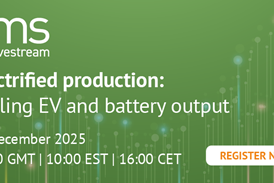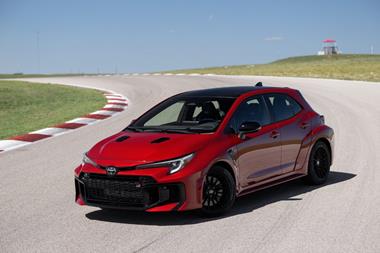 Having bought the perennial loss-making Opel-Vauxhall operations from GM last year, PSA has lost no time in starting with the turnaround required. And the early signs are that it has already had a notable impact, something which may surprise many, myself included. When the acquisition was announced in early 2017, there was a great deal of surprise and many wondered if Carlos Tavares and his team, who had turned PSA around from near insolvency, could work their magic on Opel-Vauxhall.
Having bought the perennial loss-making Opel-Vauxhall operations from GM last year, PSA has lost no time in starting with the turnaround required. And the early signs are that it has already had a notable impact, something which may surprise many, myself included. When the acquisition was announced in early 2017, there was a great deal of surprise and many wondered if Carlos Tavares and his team, who had turned PSA around from near insolvency, could work their magic on Opel-Vauxhall.
Looking at the H1 figures for 2018, the group reports turnover up 40% at nearly €38.6 billion with an overall operating margin of 7.8%. The original PCD activities (Peugeot, Citroën and DS) achieved a margin of 8.5%, while Opel-Vauxhall achieved a 5% margin, something unheard of in the GM days.
Impressive though this is, there is a long way to go for Opel/Vauxhall to operate on a par with the PCD business; this is aiming for a 6% automotive recurring operating margin by 2021 (its current 7.8% is probably not sustainable), while Opel/Vauxhall is tasked with a more modest 2% automotive recurring operating margin by 2020, climbing to PCD’s 6% by 2026.
One of the reasons for the difference is the wages to revenue ratio: at PCD this fell between 2013 and 2017 from 15.1% to 10.3%; Opel/Vauxhall might reach 13% in 2018 but with no definite date set for the 10% target. That said, labour agreements have been reached in the UK, Spain, Germany and at powertrain plants in Poland and Austria. No official announcement of a labour agreement at the Gliwice car plant has been made public however.
Despite the labour agreement, uncertainty surrounds the UK Astra plant at Ellesmere Port, but there was good news earlier in the year regarding the van plant in Luton. Here £100m will be spent to convert the plant to make PSA vans, i.e. the Expert and Jumpy and Opel/Vauxhall versions thereof. These will replace the Renault-based Vivaro; the production shift will happen in the summer of 2019, with the news of this programme accompanied by reports that the plant’s future was secure through to the 2030s. Brexit or no, vans will be made in Luton for many years to come
Overall, Opel/Vauxhall has already cut its fixed costs cut by 22% and is on target for achieving PSA’s desired €700 saving per vehicle by 2020. This, along with the labour agreements, has enabled PSA to turn Opel/Vauxhall’s 2.5% negative margin in the five months which PSA owned it in 2017 into a 5% positive margin for H1/2018, a remarkable turnaround even allowing accounting trickery. This allowed Opel’s CEO, Michael Lohscheller to describe Opel/Vauxhall, with its now impressive free cash flow of €1.2 billion in the first half of the year, as “a completely different company to 12 months ago”.
Meanwhile, at PSA the product transformation continues. All the PCD brands are moving more and more to SUVs: witness the success of the 2008/3008/5008 and DS7 for example. Production plants are expanding outside Europe, in North Africa and indeed in Namibia. And in Namibia it will not just be PCD models made there, but also the Opel Grandland X. From small things bigger things one day will come, and PSA wants Opel to double its sales outside Europe by 2020, albeit from a very low base, of just under 21,000 in 2017. Most of these were made in the Middle East and Africa, especially Lebanon, Morocco, Tunisia and South Africa. These small markets will provide Opel/Vauxhall with crucial incremental growth necessary to achieve the demanding targets set by Carlos Tavares. Much to many people’s surprise the signs are that they will be met.







































